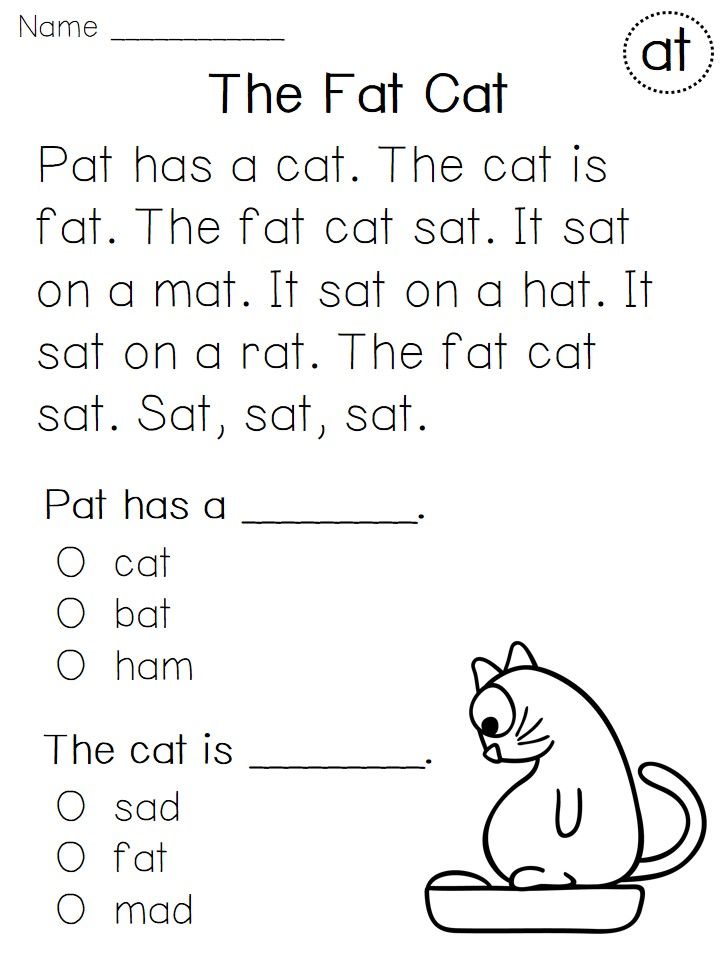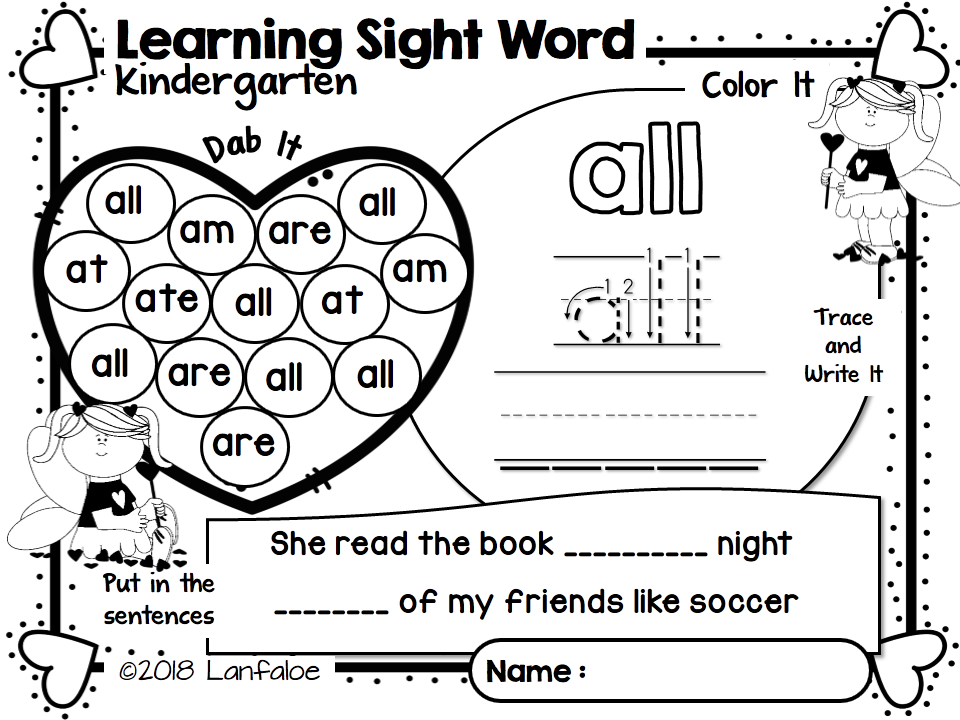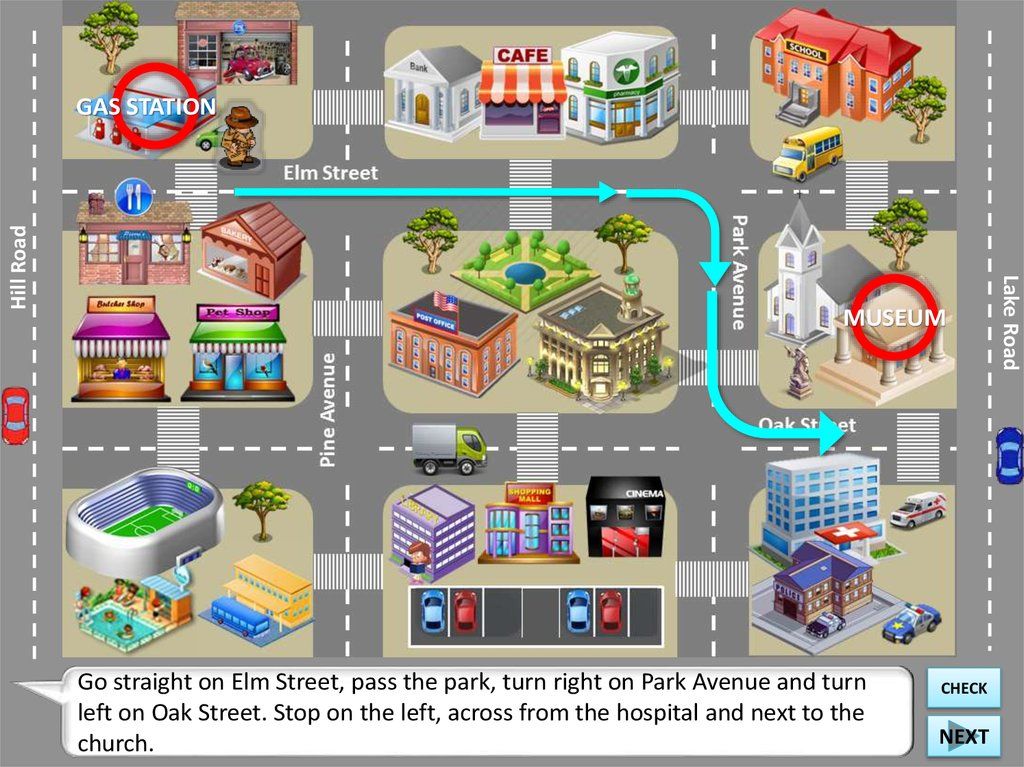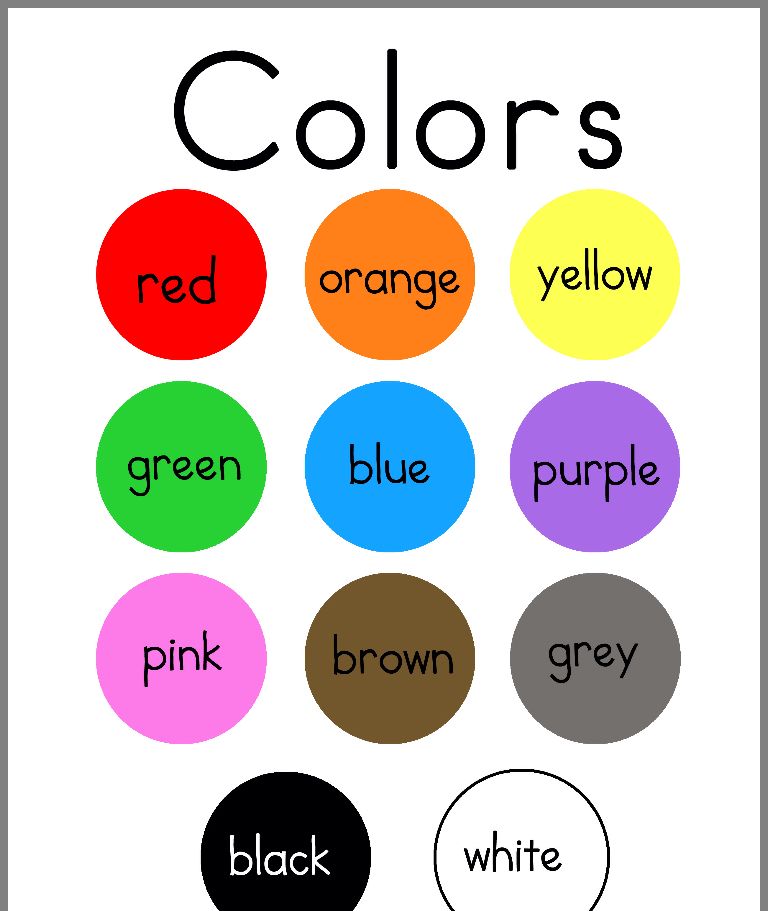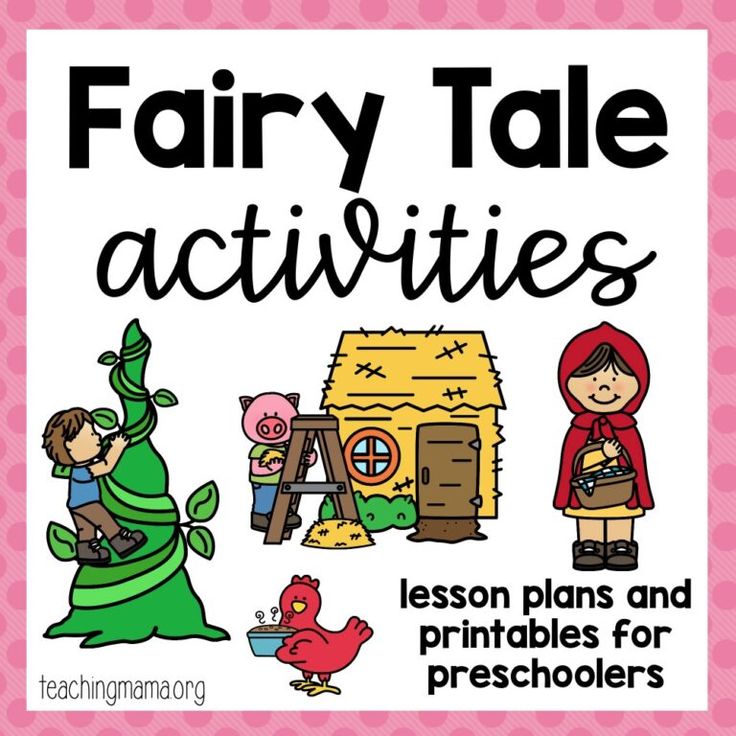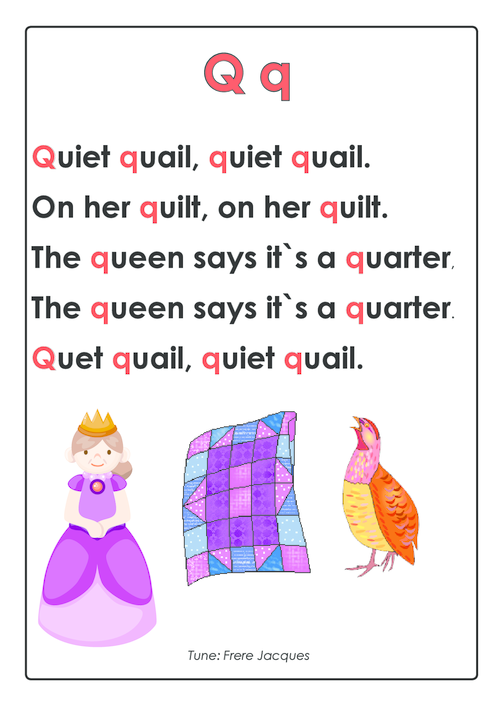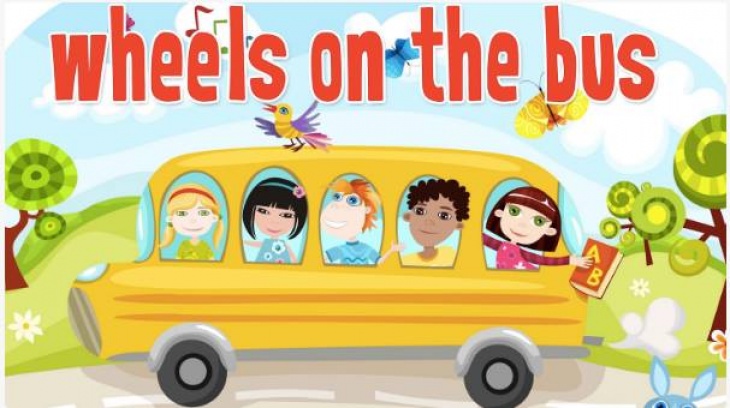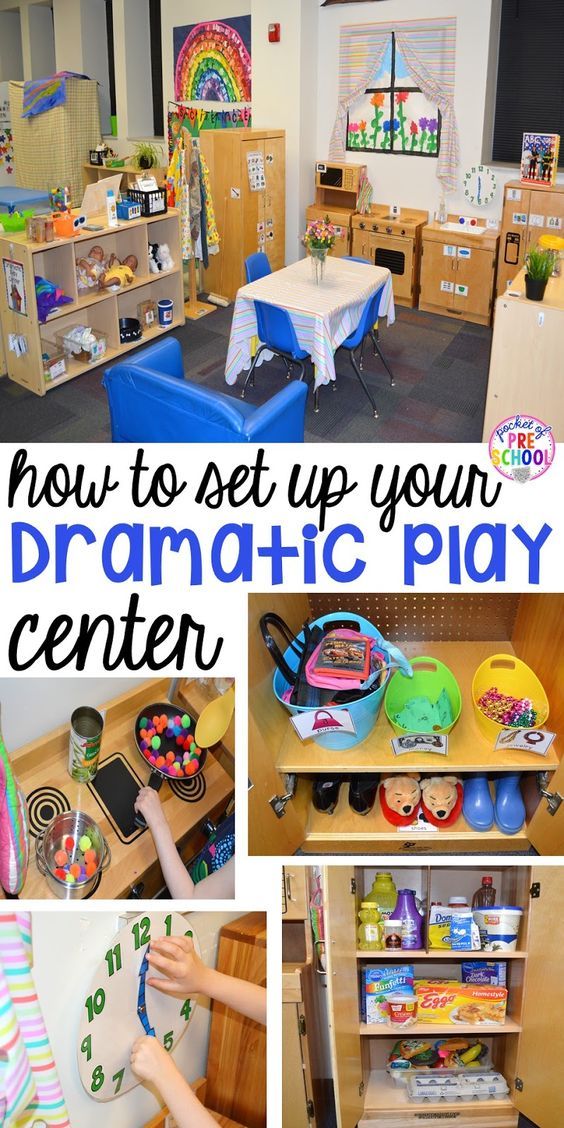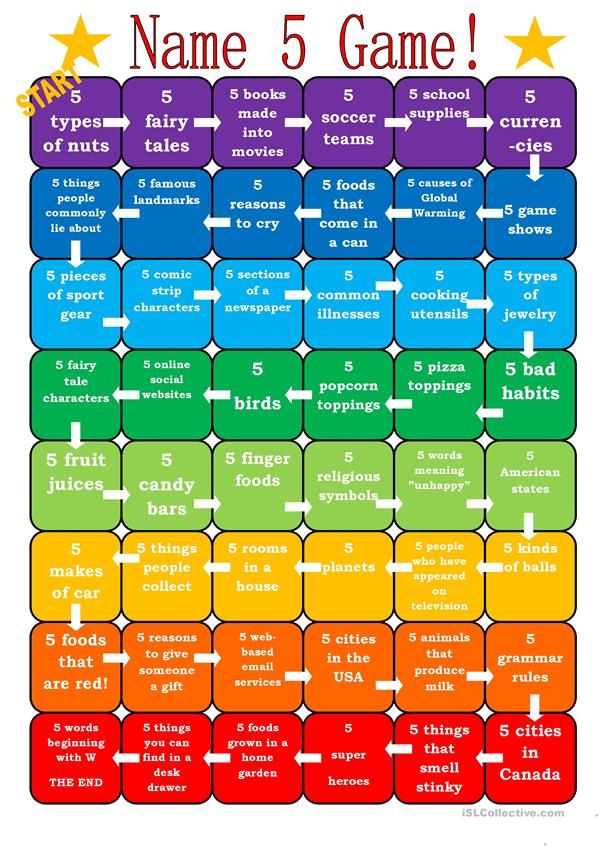English reading learning for kids
10 Best Websites to Help Your Kids Read in English
Download: This blog post is available as a convenient and portable PDF that you can take anywhere. Click here to get a copy. (Download)
Why should you read in English with your child?
Childhood is the best time to start learning a second language. A positive early experience with English often leads to a better connection with the language and improved fluency in later life. For kids, speaking and listening are easier skills to develop than reading and writing. However, learning to read in English from a young age will help your child to develop a wider vocabulary and a better understanding of structure (grammar).
Children’s books are written and illustrated to be fun, engaging and easy to understand. Connecting a new piece of vocabulary or grammar to a story or poem can make it easier for a child to remember. Reading interesting stories doesn’t feel like hard work or “study” so this is good preparation for more formal English lessons later.
Reading together with your child can help them take more of an interest in it. If they struggle to read by themselves, then listening to you read a story in English will still help them to practise their listening skills and build their vocabulary. You might even find a new favourite story together!
The recommended websites below are a mix of British and American resources. Most include videos or audiobooks, which you can use with your child to practise listening and matching the sounds of words to how they are written. All of these kids’ reading websites are free to access and many of them offer downloadable ebooks!
1. The Story Place
This is a superb website for reading online because instead of giving you an ebook, its stories are in the form of interactive games! The story appears onscreen at the same time as it is read aloud, and you can interact with the story while it is being told. There are also bonus games to play afterwards, song videos, and printable activities.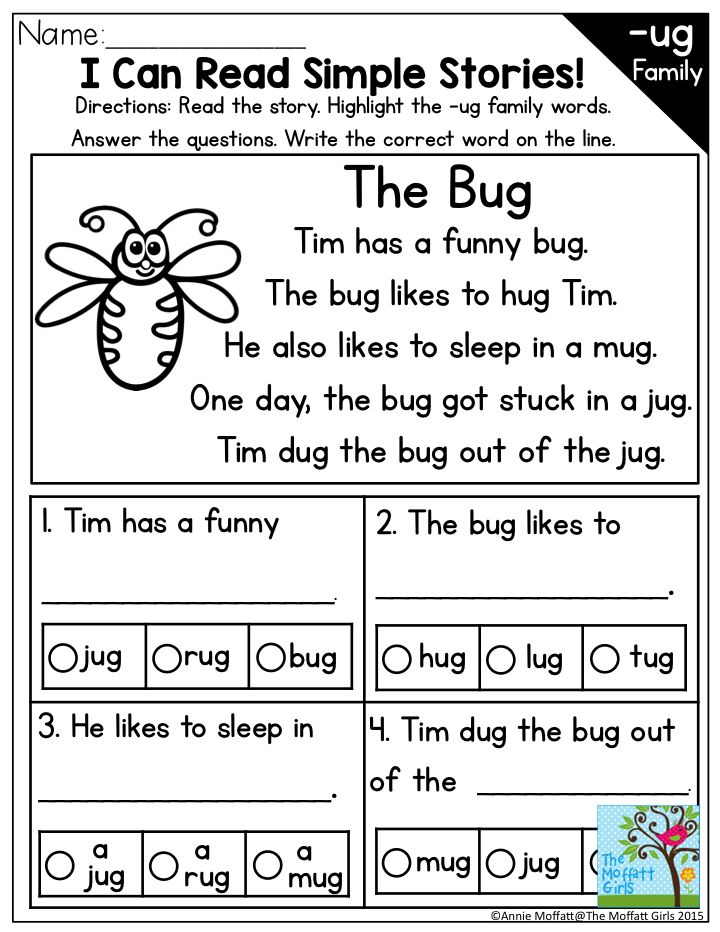 The site is built for young children, including pre-schoolers who are just learning their letters for the first time. New stories are added to this website regularly.
The site is built for young children, including pre-schoolers who are just learning their letters for the first time. New stories are added to this website regularly.
Each interactive story comes with at least one game, two songs, and a printable activity sheet to help your child practise new vocabulary that they have learnt during the story.
Try the Preschool Activity Library to find stories and activities based around your child’s interests – for example: colours, trains or their favourite animal! You can also look into the Literacy page for top tips on “raising a reader”!
We Enjoyed: I Will Not Take A Bath is a very funny little story about a baby who doesn’t want a bath until he has his favourite toys – why not practise telling the story with your child’s favourite bath-time toys?
Suggested Age Range: 3-6 years
2. Starfall
Starfall is an online resource build to help children learn to read.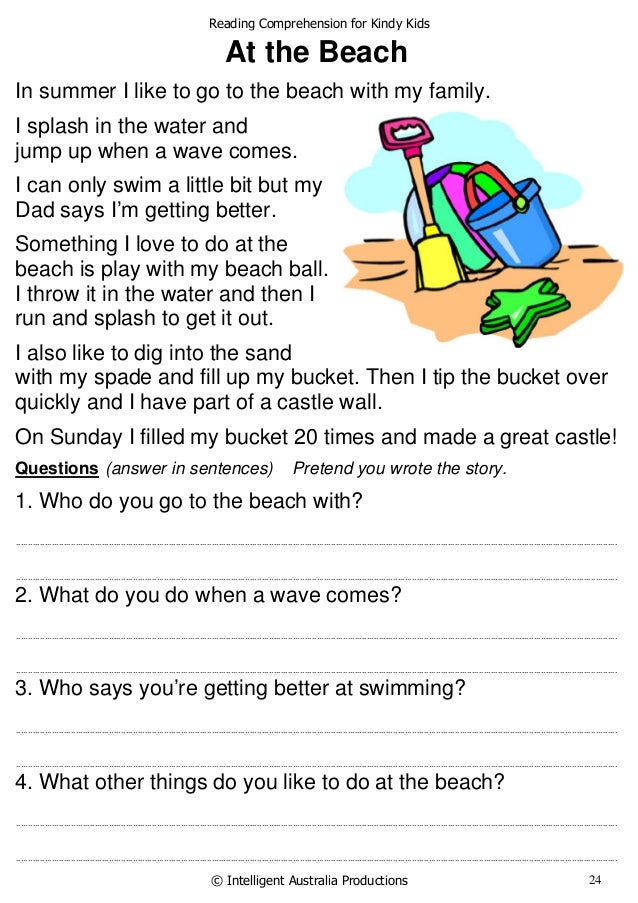 It offers interactive books for preschool children and young schoolchildren, each book is built around practicing particular letters and sounds. There are also seasonal stories – such as Pumpkin for Halloween or Snowman for Christmas – and simple maths exercises in English!
It offers interactive books for preschool children and young schoolchildren, each book is built around practicing particular letters and sounds. There are also seasonal stories – such as Pumpkin for Halloween or Snowman for Christmas – and simple maths exercises in English!
There are also lots of free resources for teaching your child at home, including printable worksheets, flashcards and posters. Some resources are only available to teachers in the USA and Canada, but there is more than enough material for you to use when teaching your kids English at home!
Try the Talking Library to practise reading and listening to famous stories – or even learn a bit of Shakespeare! Make sure you check out the Parent-Teacher Center for printables, advice, and even lesson plans!
We Enjoyed: The It’s Fun to Read section has some fun tongue-twisters to try! How fast can you say them all?
Suggested Age Range: 3-9 years
Are you worried that your child only wants to read their favourite story over and over? Don’t be! Studies have shown that children pick up vocabulary faster by rereading stories multiple times! It’s good to find new books and stories every so often, but rereading an old favourite is actually good for your child’s vocabulary and memory!
3.
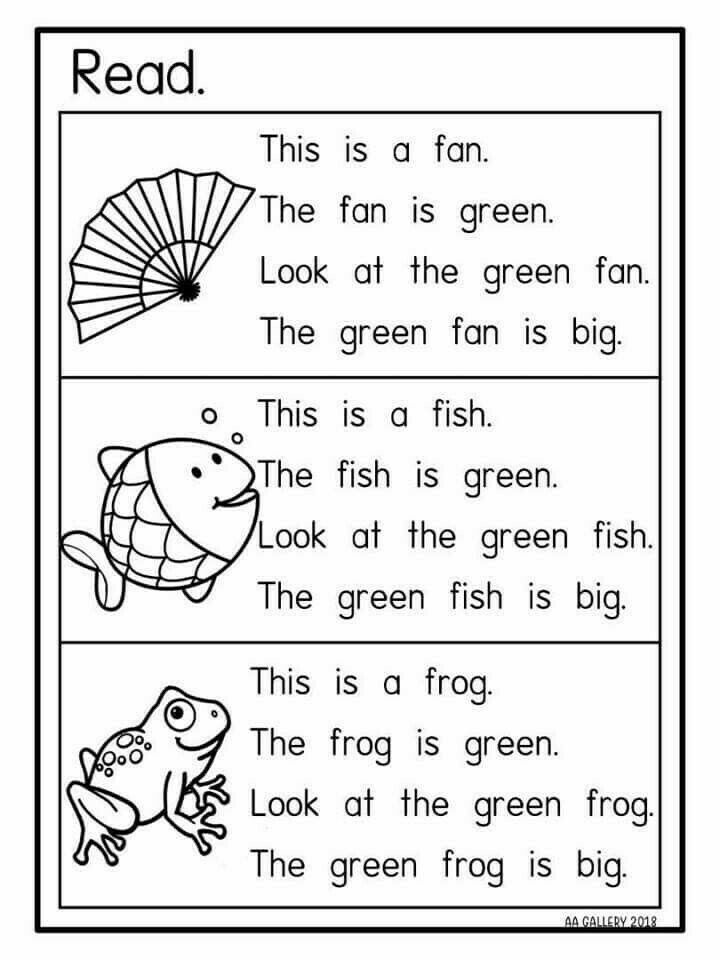 Oxford Owl
Oxford OwlOxford Owl is a British website providing free ebooks, learning activities, and workbooks for children. You have to sign up to the site to gain full access, but creating an account is completely free and gives you access to a library of hundreds of books and structured learning resources! Sounds good, right?
All resources are categorised by age, making it easy to find stories that should interest your child. Activities and workbooks are also divided in this way, making it very easy to navigate what’s best for your son or daughter!
Try the phonics guide, which is written to help parents understand and teach English phonics to their children! If you want to practise writing as well as reading with your child, the Activity Books section includes a workbook for proper handwriting. This is especially useful if your native language doesn’t use the Roman alphabet!
We Enjoyed: The Winnie the Witch books are a fun series of stories about an inept witch, and have a lot of lively illustrations that are great for younger children to explore and talk about!
Suggested Age Range: 4-11 years
4.
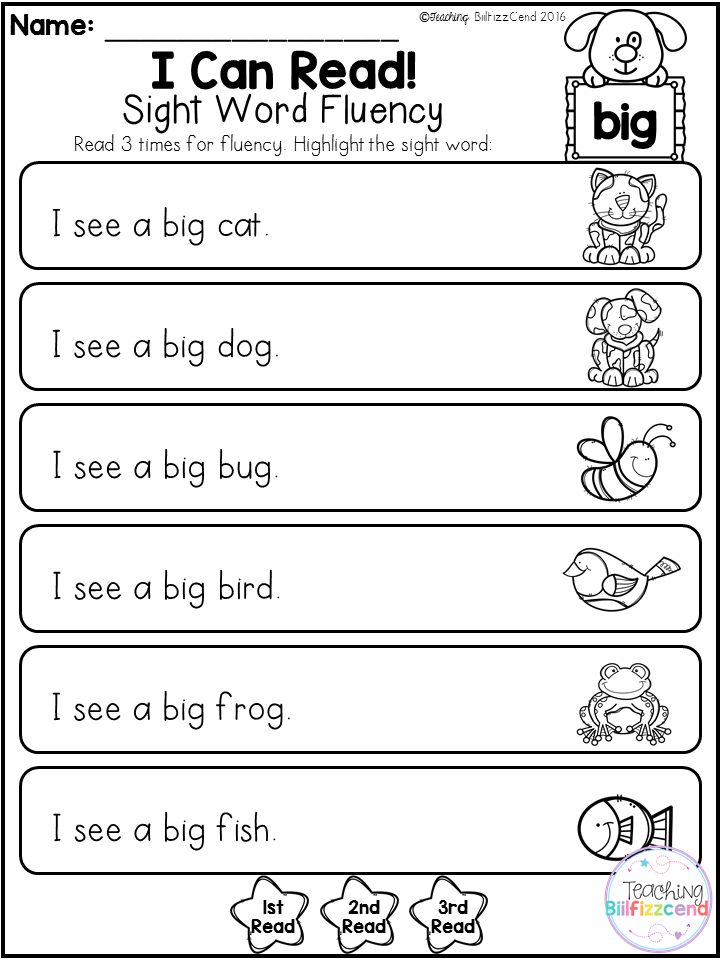 Storyline Online
Storyline OnlineStoryline Online is a great site for finding free videos of writers, teachers and sometimes celebrities reading children’s storybooks aloud. The videos come with fun visuals from the story as well! Each video also has free activity guides for both teachers and parents. These will give you plenty of ideas on how to discuss the story with your child, and games you can play afterwards.
The website’s blog also contains links to many other useful resources. Storyline is run by the award-winning SAG-AFTRA Foundation, and they are linked to a huge network of excellent literacy resources for children!
Try listening to a story one day, and then the next day too, watching it again with the sound off and the captions on. See if your child can imitate how the reader of the story talks! Don’t forget to look at the Activity Guides below each video to find ways to get your child thinking about the story they have just heard.
We Enjoyed: Library Lion is a cute, funny story that teaches children about how to behave politely in a library and the importance of helping other people.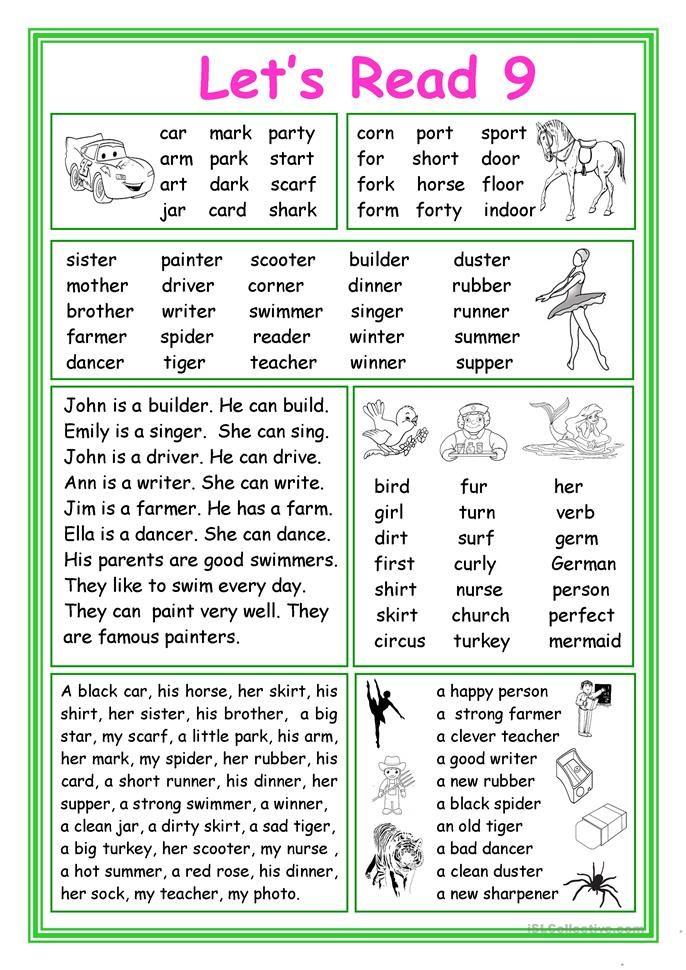
Suggested age range: 3-12 years
Find out your child’s reading level! Every child will learn to read at a different speed. Pay attention to how easy or difficult your child finds the first few books you find for them and adjust the English level of these books if necessary. Learning to read should be challenging, but not so frustrating that they want to give up! Experiment to find the right balance.
5. Free Kids’ Books
This one is, quite simply, exactly what it says on the tin – a website dedicated to sharing children’s books for free! Books are sorted for toddlers, young children, older children and young adults/teenagers, and can all be either read online or downloaded as a pdf for offline reading.
As well as storybooks, this site has hundreds of non-fiction books, allowing your child to use English as a tool to learn about different countries, famous people, history, science, or whatever takes their fancy!
Try the School Textbooks category to find free textbooks and workbooks aimed both at American schoolchildren and kids studying English as a second language.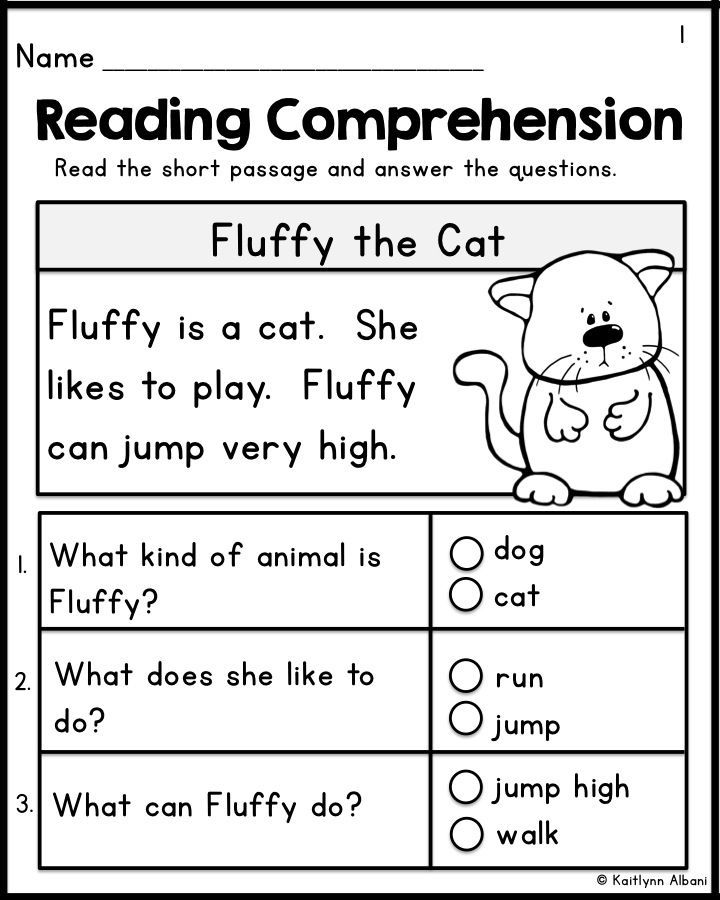 The Learn to Read category is also an excellent stop if your child is just beginning to learn to read in English – it’s full of books that are simple, but engaging!
The Learn to Read category is also an excellent stop if your child is just beginning to learn to read in English – it’s full of books that are simple, but engaging!
We Enjoyed: Sticky Brains by Nicole Libin is a great book for learning how to talk about emotions, as well as good and bad events. It is an easy way for kids to learn about managing stress in life.
Suggested Age Range: 3-15 years
6. The International Children’s Digital Library
The ICDL is an incredible resource for finding children’s books from all around the world. Most of the books are in English, but there are dozens of languages available. There are many books that are in more than one language, like the award-winning The Blue Sky by Andrea Petrlik Huseinović, which you can read in English, German, Italian, Spanish, Russian, Slovak, Romanian or Farsi! The website is easy to explore and gives you access to hundreds of books that you can read online for free!
Books are sorted by language, but also by country. You can decide whether you’d like to read books in English from America, Australia or Great Britain – just as we have different accents, you might notice some differences in how we write and tell stories!
You can decide whether you’d like to read books in English from America, Australia or Great Britain – just as we have different accents, you might notice some differences in how we write and tell stories!
Try finding some books that are available in both your native language and English. Read them together in your native language first, then read them together in English! Look for the White Ravens tag as well – these are top quality books that have been approved by a panel of language specialists!
We enjoyed: The Hare of Inaba, a translation of a famous Japanese fairy tale in English, German, Italian and Spanish. The story is short and easy to read and comes with many beautiful Japanese paintings!
Suggested Age Range: 5-12 years
If you read books from a variety of English speaking countries, you may notice some differences in spelling, such as “mum” and “colour” in British books, but “mom” and “color” in American ones.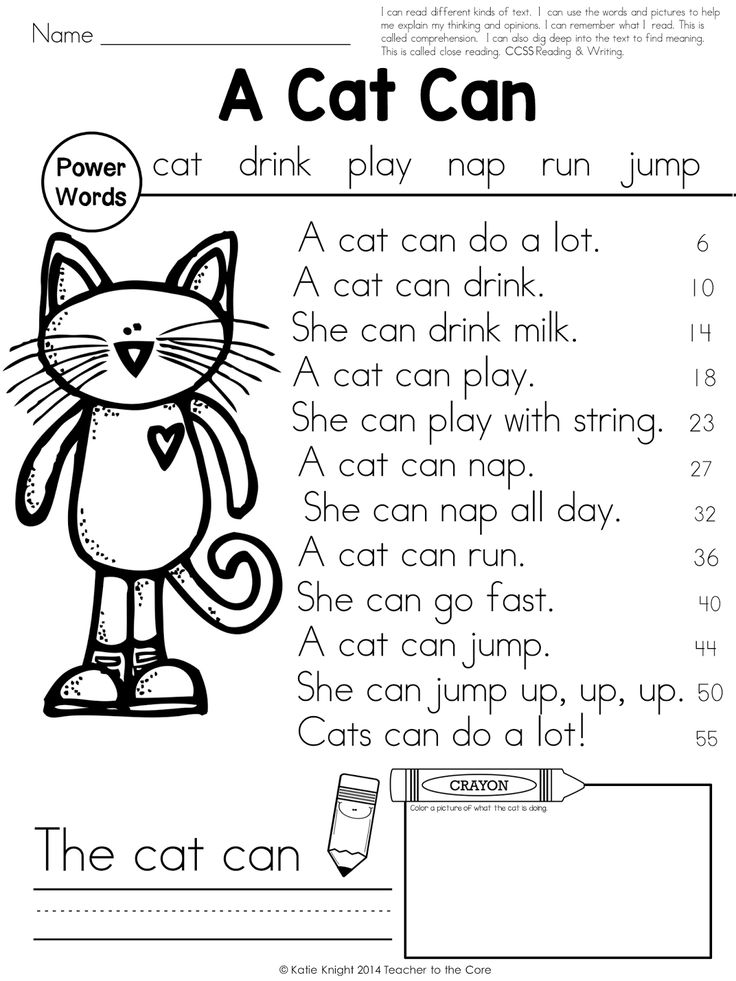 When learning the language, it’s important to choose one preferred variant of English. You should also encourage your child to understand the differences between British and American English.
When learning the language, it’s important to choose one preferred variant of English. You should also encourage your child to understand the differences between British and American English.
7. Project Gutenberg
Project Gutenberg is the world’s best resource for finding books for free online. Most of the books are older books, but there are still plenty of children’s books that can be read online or downloaded to read on your phone, tablet or kindle. Make sure to check the publication date of a book before using it because some of them are hundreds of years old and the English in them doesn’t look anything like modern English!
Project Gutenberg adds books to its library when they come into the public domain, so they add hundreds of new books every January 1st. It’s a particularly useful site for teenagers who are interested in history!
Try reading different versions of a famous story, like Cinderella or Goldilocks and the Three Bears, and see what new words you can learn from different books! Make sure to use the Bookshelves feature to make it easy to find the kind of books you’re looking for, such as “Children’s Picture Books”!
We enjoyed: The Blue Fairy Book is a very pretty e-book with nearly forty famous stories that are easy to read quickly!
Suggested age range: 5+ years
8.
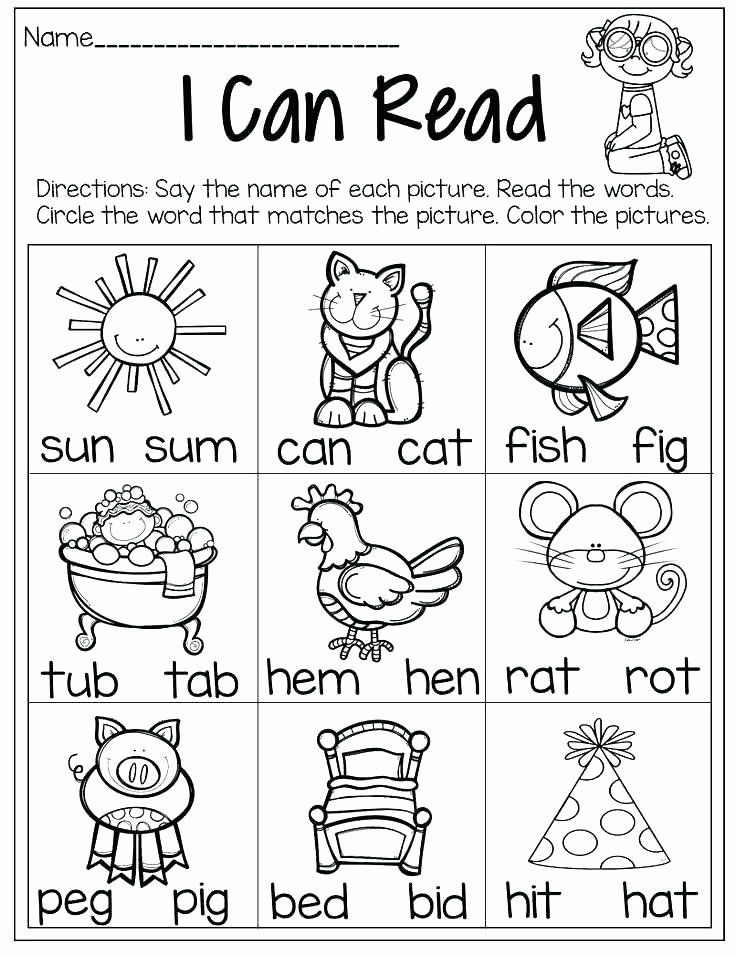 Breaking News English
Breaking News EnglishBreaking News English is a website that updates every day with news articles written in English at different fluency levels, ranked from 0 to 6. The articles written at levels 0-3 should be interesting to children, but the higher levels are excellent practise for teenagers and adults, too!
Each article comes with several activities attached, with different activities for each level. The goal of these tasks is to encourage children to think and talk about the news that they’ve just read and to help your child take an interest in what’s happening in the world!
When looking for articles, try picking a Theme that interests your child – e.g. the environment or technology. Older learners can look at articles focused around education and even business!
We enjoyed: Using the listening section to hear articles read aloud. You can listen to them at different speeds to make it easier or more challenging.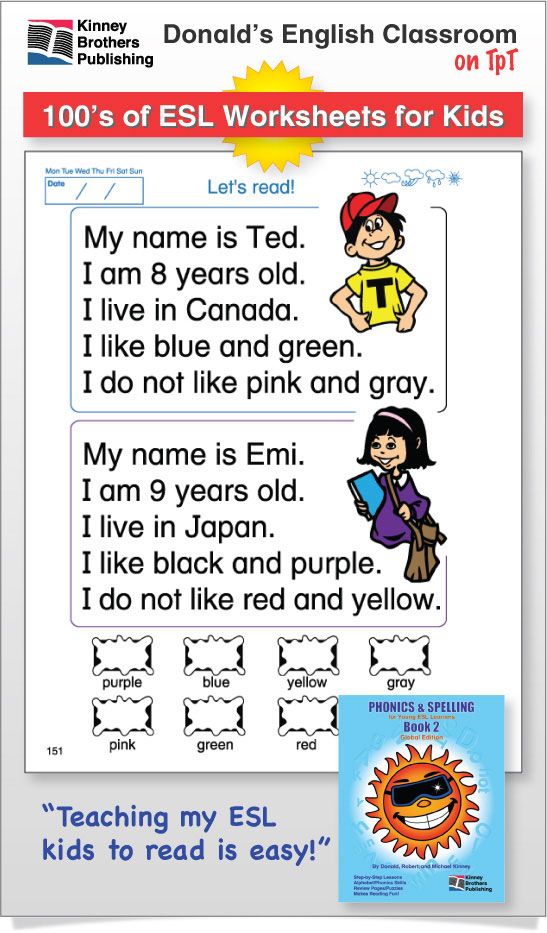 You can also listen to them in either American or British English so you can get used to different accents!
You can also listen to them in either American or British English so you can get used to different accents!
Suggested Age Range: 6+ years
If a story doesn’t come with pictures, follow it up or take a break by encouraging your child to draw pictures for it! Drawing a story can demonstrate how well your child understands what they’re reading, and doing a drawing they’re proud of can help them remember the story and any new vocabulary in it. Then you can use the drawings when you want to read the story again! Creating comics with drawings and text is also a fun activity to try at home!
9. Storynory
Storynory is an excellent site with stories aimed at older children, teenagers, and even adults. Above the text of each story is an audio recording, so you can listen to it as you read. Hundreds of stories, poems and non-fiction books are accessible completely free!
Storynory also contains a sizeable library of poems, rhymes and music. Children have an easier time learning rhymes and songs because they have a rhythm.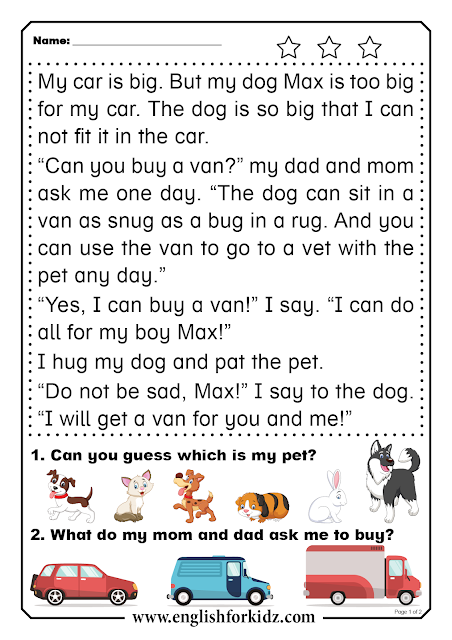 Practising some of the classics available on the site can really help your child remember new vocabulary too!
Practising some of the classics available on the site can really help your child remember new vocabulary too!
Try reading the comments that people have left under each story and decide if you agree or disagree. Once you’ve read a story, leave your own comment saying what you think of it! The Junior Stories section contains short stories for younger children, and while it’s not very big right now, the collection is growing fast!
We Enjoyed: The Histories of Herodotus have been written in easy English, so your child can learn some history in a fun and engaging way!
Suggested Age Range: 8+ years
10. Simple English Wikipedia
Wikipedia is one of the most useful sites on the internet for learning new things, but you can also use it to help your kids learn English! Simple English Wikipedia rewrites wikipedia articles to make them easier to read, which can be very useful when you’re learning English as a second language.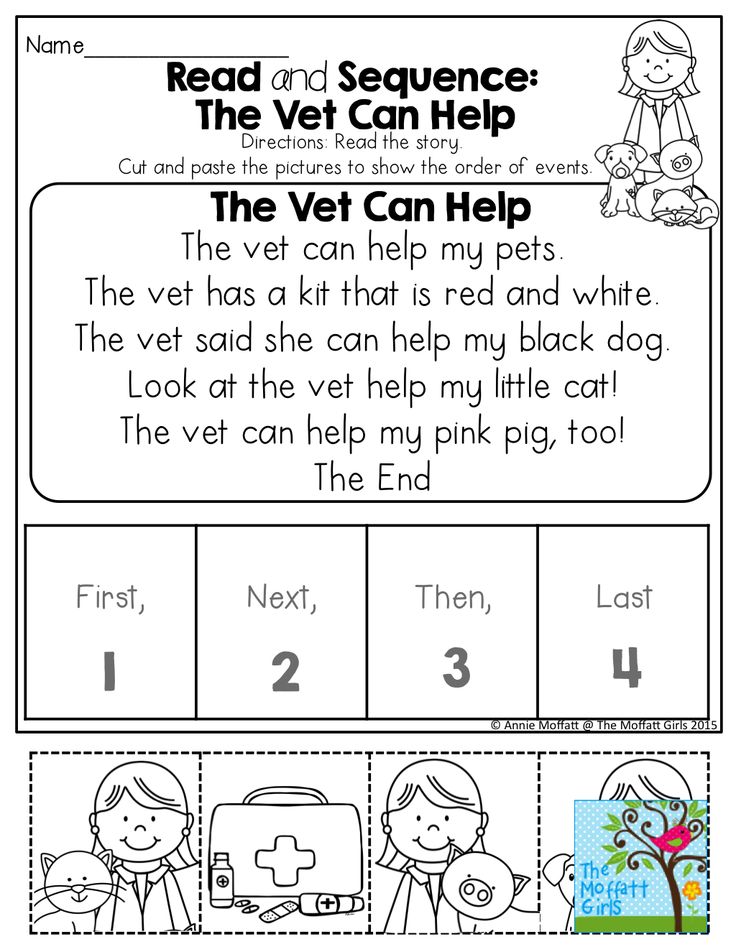
This website is not the best resource for absolute beginners. However, it can be very helpful for anybody with a couple of years’ experience reading in English who wants to expand their general knowledge and their reading ability.
Try reading about your own country or your child’s favourite movie and see if you can learn something new together! Alternatively, set your child a project to do on a particular subject and show them how to use wikipedia to research their topic online. This is a useful skill to learn.
We enjoyed: The page on Basic English includes a picture wordlist, which is a great resource for learning core English vocabulary and making your own flashcards at home!
Suggested age range: 10+ years
If you leave your child to do some reading alone and want to check up later how they did, don’t just quiz them on what happened in the story. Ask them who their favourite character is and why, or what they think of the story, and what they think is going to happen next! This can help you pick books your child will like in the future, and your child will be more engaged if they know you care what they think and feel about the story!
Want to improve your child’s English fast? We can help! Our British English teachers offer specialised 1-to-1 classes for kids that are educational and fun.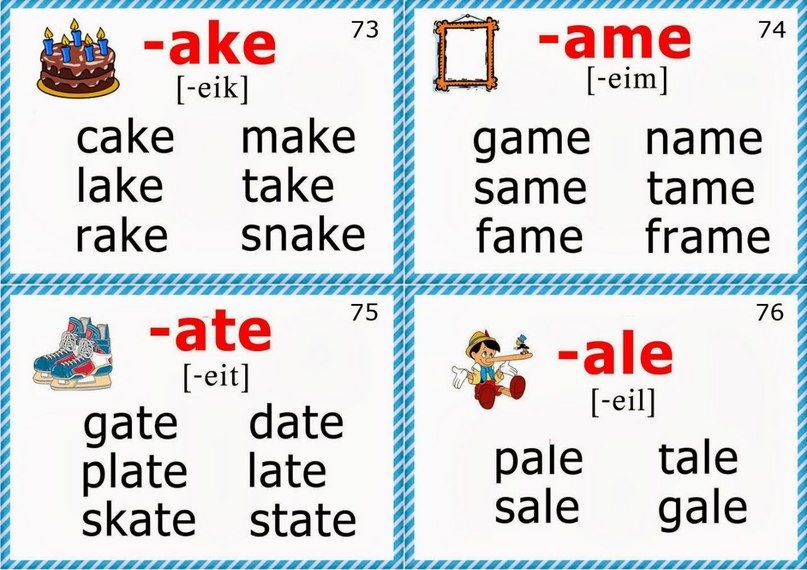 We believe that a positive experience at an early age leads to a love of English and better fluency for life. Contact us today to book your free consultation and see how our online lessons can help your child succeed!
We believe that a positive experience at an early age leads to a love of English and better fluency for life. Contact us today to book your free consultation and see how our online lessons can help your child succeed!
Download: This blog post is available as a convenient and portable PDF that you can take anywhere. Click here to get a copy. (Download)
Charlotte J.
— ESL Tutor.
Find this post useful? Share it with friends!
Tweet
Read more
-
study
Using Nouns In English (All You Need To Know)
In this study guide, you will learn about different types of nouns, with examples of how to use them in a sentence. Check out the exercises at the end to test your understanding! You can also download this guide as a free pdf to use offline. Continue reading →
-
exams
How To Prepare For IELTS Online: 25 Best Resources
There’s so much written online about the IELTS test that it can be hard to know where to start! In this guide, we will walk you through the best online resources to help you prepare for your IELTS test at home.
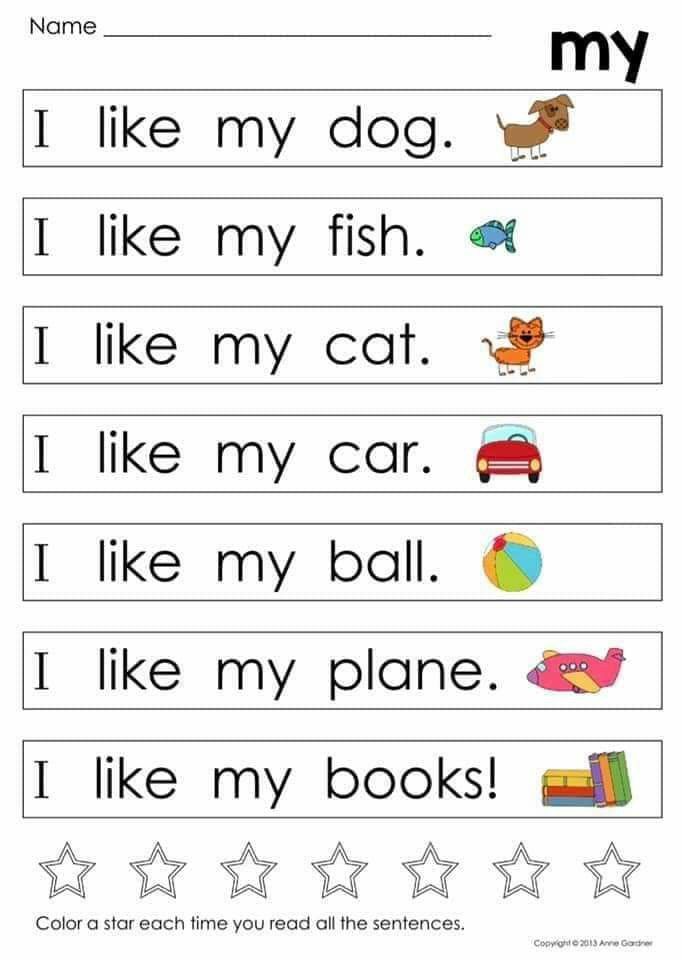 We have divided this up by section (Speaking, Listening, Reading and Writing) and each of these provides links to the best tips, advice, YouTube videos, preparation material and practice tests. Continue reading →
We have divided this up by section (Speaking, Listening, Reading and Writing) and each of these provides links to the best tips, advice, YouTube videos, preparation material and practice tests. Continue reading → -
study
Learning English by Skype
Today, more people than ever before are learning English by Skype. As technology progresses and the demand for English tuition rises, many are opting to study online with native English teachers. Continue reading →
-
study
100 False Friends In English And Spanish (With Examples)
“False friends” are words that look the same in two languages but have different meanings. English and Spanish have many words in common (e.g. from Latin). Some of these words have changed their meanings over time to create false cognates. Continue reading →
ESL - Children English
ESL - Children EnglishListen & Speak Reading Writing Quizzes Grammar Vocabulary Children English Lesson Plans Business English El Civics Lessons ESL Games ESP Idioms & Slang Pronunciation Online Dictionaries CALL Instructors' Sites Textbooks & Software Useful Info About
Start Reading
- Start Reading for Children (1) Interesting content for children, simple present tense
- Start Reading for Children (2) More 50-word stories for kids to improve English through reading
- Start Reading for Children (3) 100-word stories for kids to further improve reading
Kindergarten English
- Learn to Speak Kindergarten English Coversations for children to start learning English and practice speaking
- Super Easy Reading (1) 100 short stories, 50 words each, simple present tense, + audio
- Super Easy Reading (2) 51 short stories, 100 words each, simple and easy
Short Stories for Children
- English for Children (1) 100 easy short stories for kids who have just started to learn English
- English for Children (2) 125 easy short stories for children to practice reading and listening
- Easy Reading (1) 200 easy stories for ESL/EFL beginners to practice reading and listening
- Easy Reading (2) 200 more easy stories, which are a little more difficult and longer
- Learn English Kids A British Council site with lots of free online games, songs, stories, and activities for children
- Tales for Teenagers Fantasy, fiction, and horror; also downloadable for most eReaders and mobile phones
Baby Sign Language
- Baby Sign Language Give baby something to talk about with 20 simple sign language words.
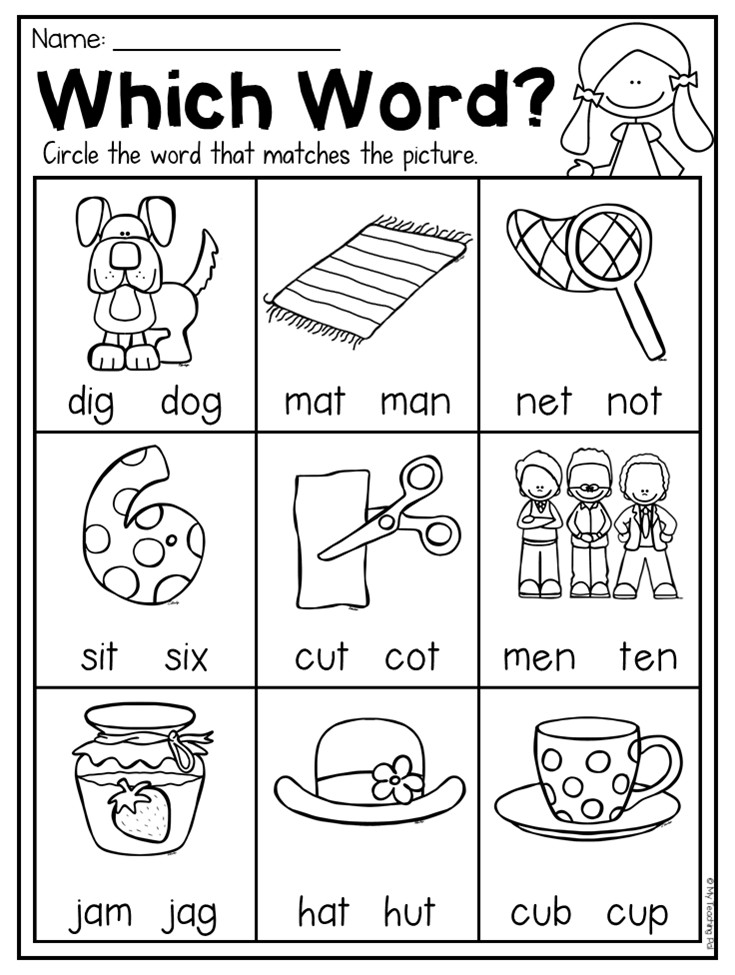
- Sign Language for Babies Teach your Baby Sign Language with the Baby Sign Language Video
Math English
- Math Games Play Free Online Math Games for Kids
- Maths Chase Fun maths games to make maths learning more fun
- Math in English Hundreds of math worksheets, puzzles, games, videos for grade 1-6
- Online Math Tools offered through a variety of online resources
Phonics
- Starfall A free public service to motivate children to read with phonics
- Phonics Games Shake things up with online phonics games
- Fun Phonics Teach 4-6 years old children to read and write using sounds by following video tutorials and activities
- Phonics Phonics posters, flash cards, coloring sheets, game cards, handouts, and more
Videos from youtube.com (Cannot be viewed in China)
- Kids Online English English cartoons, childrens songs, fun English conversation, and more
- Names of Fruits See the fruit and learn its pronunciation and color
- Numbers Teach kids and beginners how to count from one to ten
- ELF Kids Videos Fun songs, vocabulary, alphabet, and phonics
Lesson Plans and Worksheets
- The World of Jan Brett Jan Brett is one of the nation's foremost author illustrators of children's books
- ESL Kids Lab Printable ESL worksheets, ESL printables, worksheets, flashcards, and phonics
- EFL Play House An excellent resource for teachers of young learners
Games
- Math & Logic Games Students can learn math while having fun learning in a focused environment.
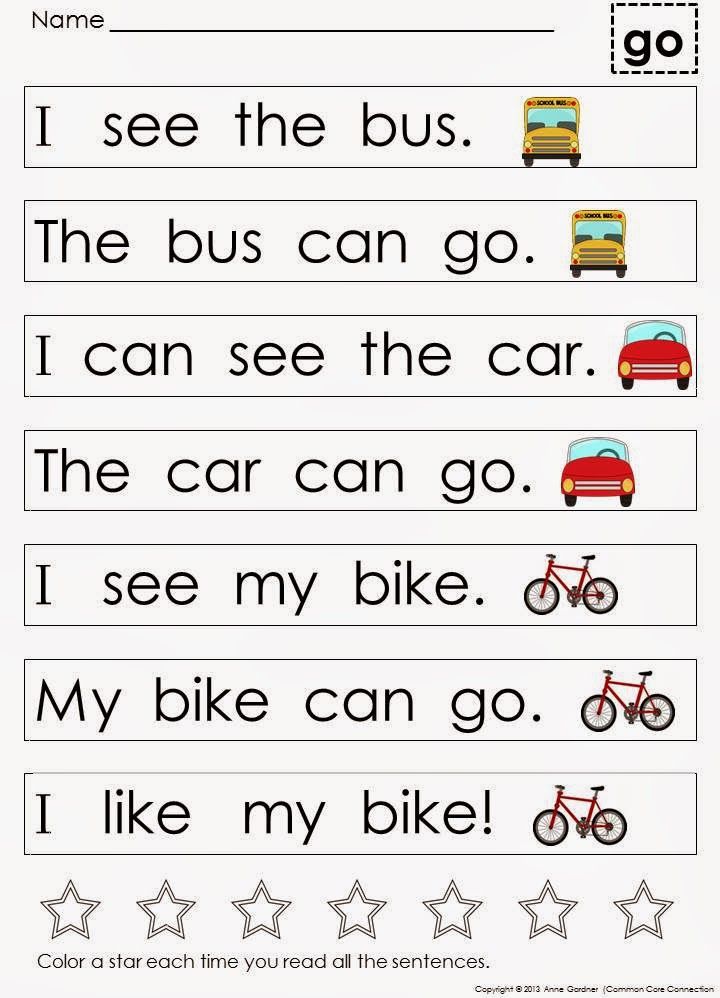
- Kids Games + Activities free online learning games about nutrition and healthy eating
- PBS Kids Games, stories, music, and coloring
- NASA's Kids' Club NASA's website for kids, including games, animations, projects, about space
- Brain Pop Popular site for kids to learn English and other subjects
Children's Literature
- International Children's Digital Library The best in children's literature are made available online
- Inspiring Bedtime Stories Stories recommended by Sleep Advisor
Nutritions for Kids
- Physical, Mental, and Skin Health for Kids and Teens It summarized each section with actionable items
- Healthy Diet Reviews Eat the right foods and pay attention to your diet
- Kids' Health Dealing with feelings, recipes, everyday illnesses, injuries, and kids' talk
- Health and Nutrition for Kids A kids' guide to better health and nutrition
Internet Safety Guide
- A Parents' Guide to Internet Safety for Kids To help you understand how to navigate the internet safely
- The Guide to Internet Safety The strategies to keep you and your children safe on the web
tesleslfast.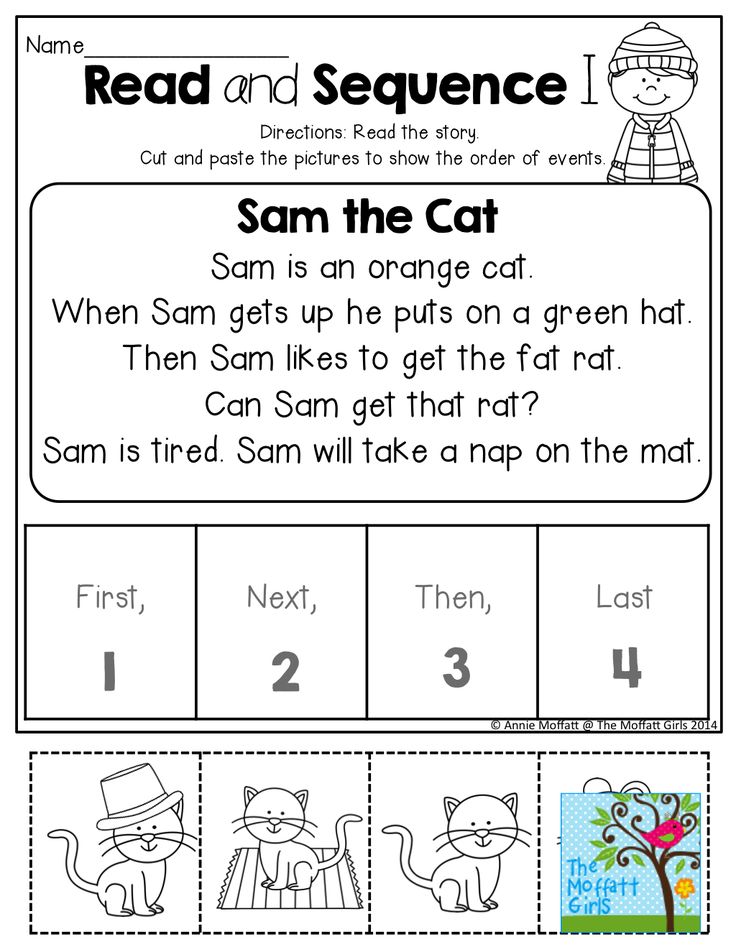 com
com
How to teach to read in English: tips, pdf-cards
For native Russian speakers, reading comes down to letter recognition. The English are not so lucky, and with them, and everyone who learns English as a foreign language. It is sometimes difficult even for the inhabitants of Foggy Albion to write and read competently in their native language. In this article, we will analyze the complexity of learning to read in English and give practical advice on how to teach this to children and adults.
Contents:
- The essence of the problem
- Syllabic reading
- Vocabulary reading
1. The essence of the problem
Thanks to the reform of Peter the Great, complex “beeches”, “lead”, “verb” and others, and the letters “ a", "be", "ve". Learning to read has become easier: the letter began to denote the sound that is in its name. There was no Peter I in English history, therefore in modern English there are more than forty phonemes and only 26 letters.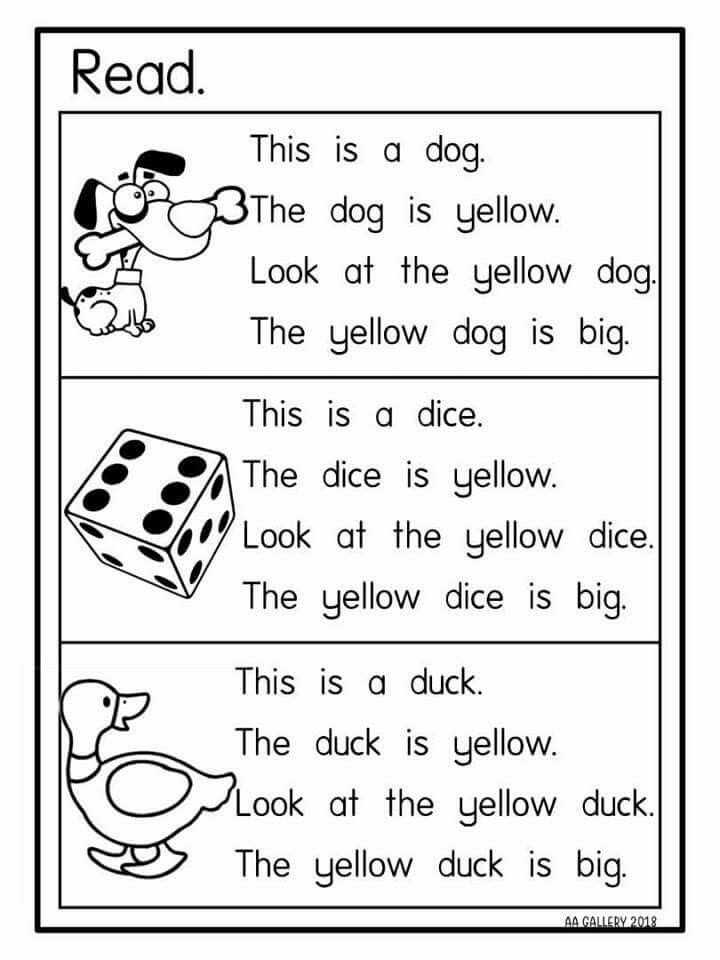
Obviously, there are not enough letters to convey all the variety of sounds in the English language. Moreover, historically it so happened that some sounds do not have their own letter - for example, [ ʃ ] and [ tʃ ]. Conversely, other sounds can be indicated by several letters ([ k ] - c at, k ite, q ueen, [ f ] - f an, ph one).
How can an English teacher solve a problem? Learning to read will be successful if you combine two approaches at the same time: syllabic and vocabulary reading.
Our materials may also be useful:
2. Syllabic reading
This approach is similar to learning to read and write in Russian.
Step one
The student memorizes only one sound, which stands for each letter (the phonemic principle of learning to read). Phonetic songs will help in learning:
Second step
We learn the rules of reading, that is, we read by syllables.
1) Get acquainted with some simple digraphs denoting vowel sounds (house, mouse).
2) Learning combinations with the letter -h-: -sh- (fish), -ch- (chips), -th- (three/this).
To introduce students to the reading rule -sh , I usually ask them to write in English a few simple words that are familiar to the ear: pink, dog, lemon, green, red, desk, book, pen, etc.
After that, please write the word fish.
Then we bring the student to the conclusion that in English there is no letter for the sound [ ʃ ], and ask the question: how did the British solve this problem? After the student has tried to come up with an answer (it is important that he tried it!), we come to the conclusion that if there is no letter, such a sound can be written with a combination of other known letters.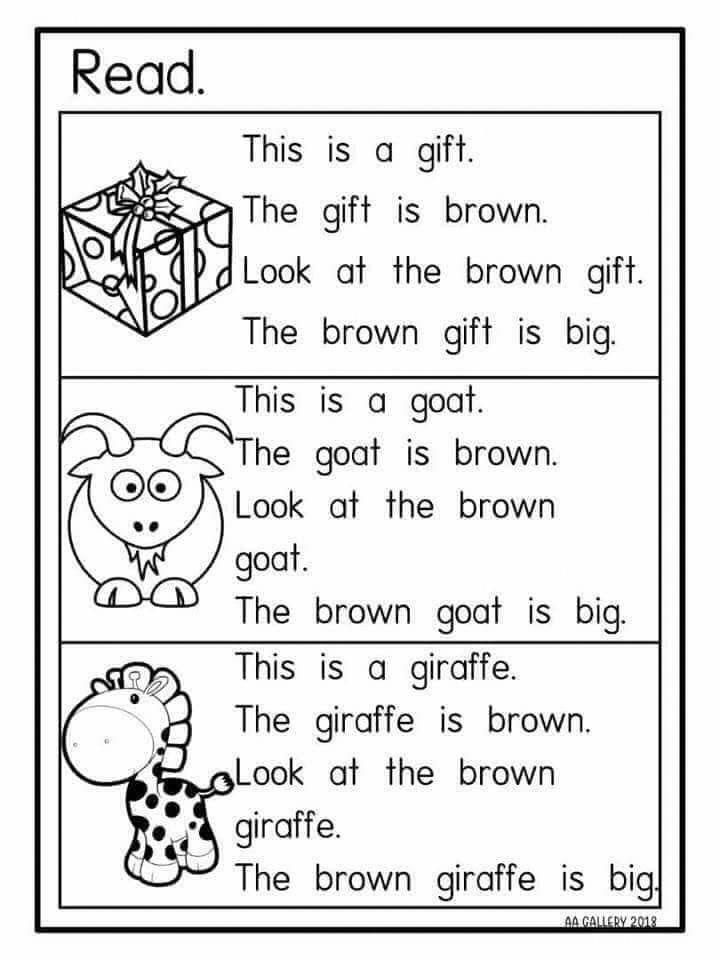 In English, to record the sound [ ʃ ] use the letters - sh
In English, to record the sound [ ʃ ] use the letters - sh
Such an inductive way of getting acquainted with the reading rule through a problem situation is much more effective , than the “out of the box” rule (deductive way).
3) When the student has already mastered the rules for reading some letter combinations, we introduce the rules for reading vowels in an open syllable ( I type of reading ).
Option 1. We use the analogy with the Russian language
Option 2. We tell a fairy tale about the “magic” E (cow), -ea- (peach, meat, sea).
5) enter the reading rules with the letter w: -wh (what, when), -wa / wha
6) we introduce the rules for reading vowels before -r (III type of reading):
A a - [a:], car, star
E e - [ɜ:], her
I i - [ɜ:], bird, girl
U u - [ɜ:], purple
O o — [ɔ:], fork, horse
Further, the sequence of studying the reading rules depends on the topics of the lessons.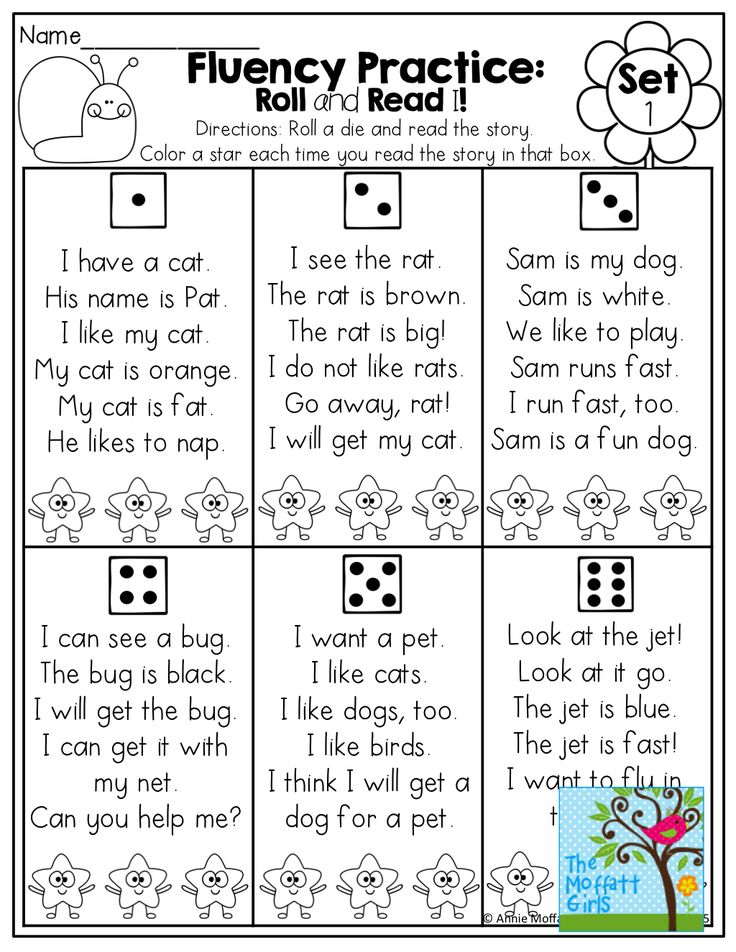 So, when getting acquainted with the topic “Clothes”, we remember or repeat the phonetic equivalent of the digraphs –ou (blouse, trousers), -ir (skirt, T-shirt). Studying pets or school supplies, learn about readings of the letter Cc (-e, i, y + c = pencil, mice).
So, when getting acquainted with the topic “Clothes”, we remember or repeat the phonetic equivalent of the digraphs –ou (blouse, trousers), -ir (skirt, T-shirt). Studying pets or school supplies, learn about readings of the letter Cc (-e, i, y + c = pencil, mice).
Fairy tales and images will help to learn reading rules with preschoolers and younger students:
Cards for memorizing reading rules3. Vocabulary reading
There are many reading rules in English, most of which are difficult to remember. In order not to overload students at the beginning of their acquaintance with a foreign language, in this way we learn the literal images of new words, “like pictures”.
Based on vocabulary reading, we also learn numbers up to 10. Explain word reading one, two is extremely difficult - it's more efficient to just remember them.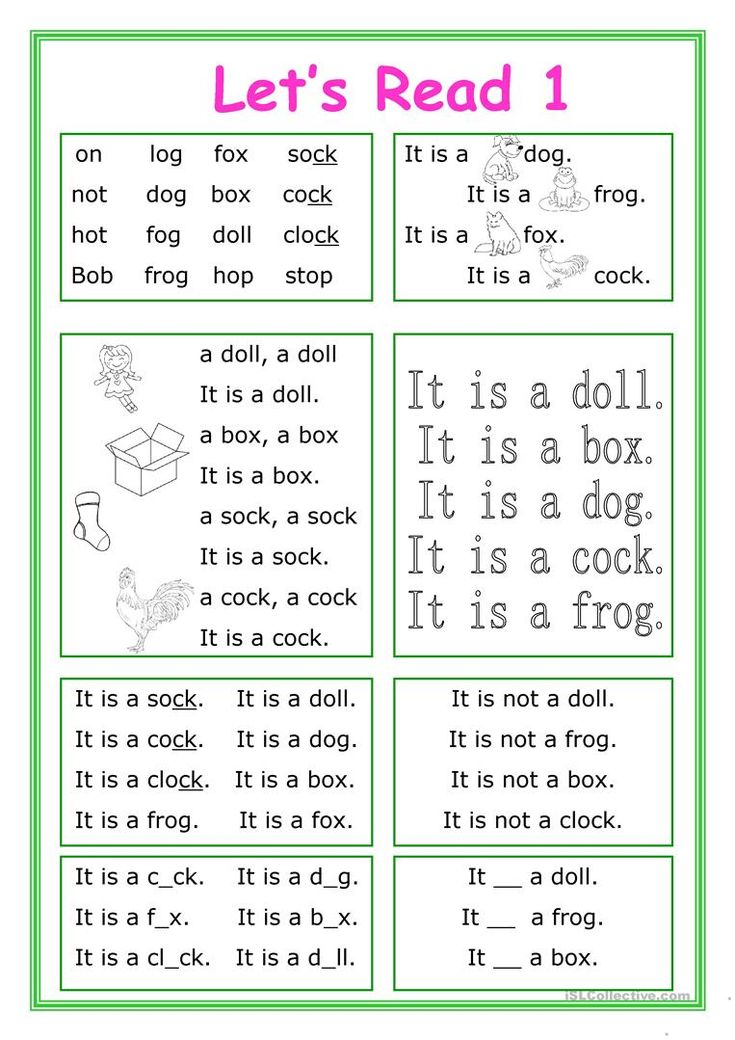
Interrogative words, first of all What and How , are memorized in images.
So we teach children not only to use the rules of reading, but also to memorize the literal image of the word. It is important to explain to parents the principle of vocabulary reading and the reason why teachers are forced to use it.
By the way, you can download our useful cards for free.
kartochki-dlya-uroka-uchim-chteniyuDownload
How to help students remember the alphabet of a word
Memory and thinking are closely related to fine motor skills, so the easiest way to memorize new words is to write them down. It is important to write with your hand, and not to type text on the keyboard. What else can be used:
- Games for the development of memory, and above all the game "Memory" (you need to match a card with a picture with a card-pair with the corresponding word).
- Games like "Anagram" (where the letters of the word are mixed up and they need to be arranged in order), "Gallows" (where the student has to guess the word by naming one letter after a certain number of attempts).
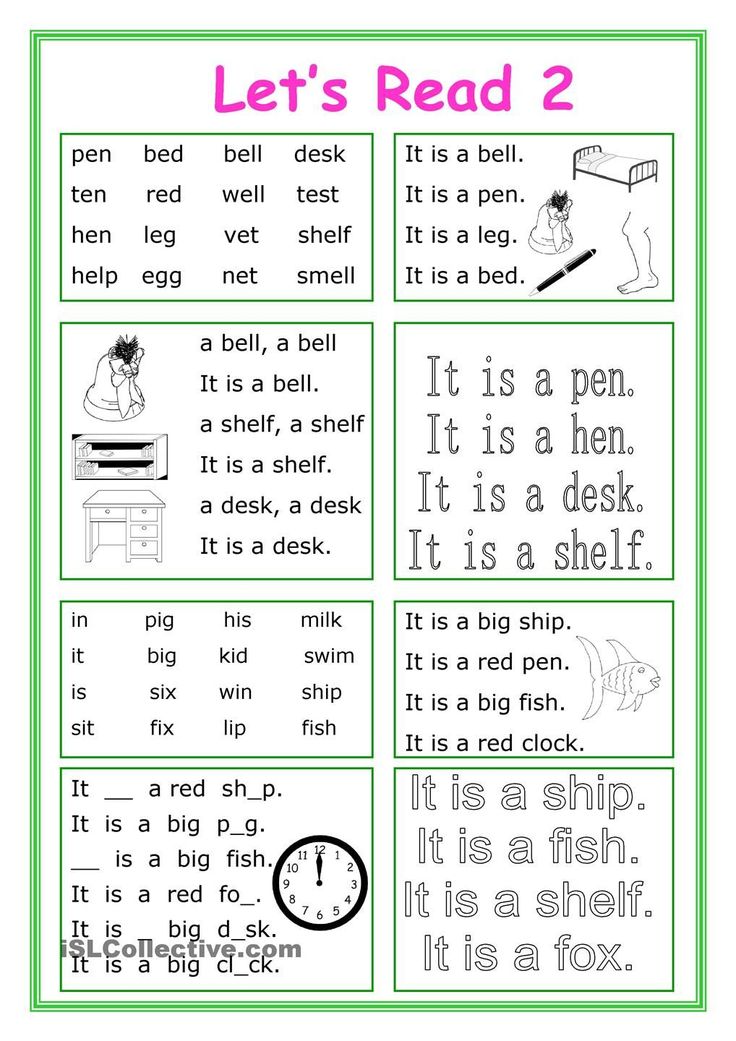
- Reading cards. I use flashcards by type of reading and by topic.
Consistent introduction to letters and reading rules in combination with vocabulary reading will allow students to learn to read in English without much difficulty.
Healthy Unclear
How to teach a child to read in English
English teacher Suliman Aktemirov tells how to instill in a child a love of the language through reading, what practices to use and why it is worth starting with sounds
About the author: Suliman Aktemirov, teacher of the online school “Teach. At home".
Many parents think about the need to teach their children foreign languages early. Of course, you can always send your child to specialized lessons or hire a teacher, but you can learn the basic knowledge yourself - together, at home, in a comfortable environment, using a number of effective techniques.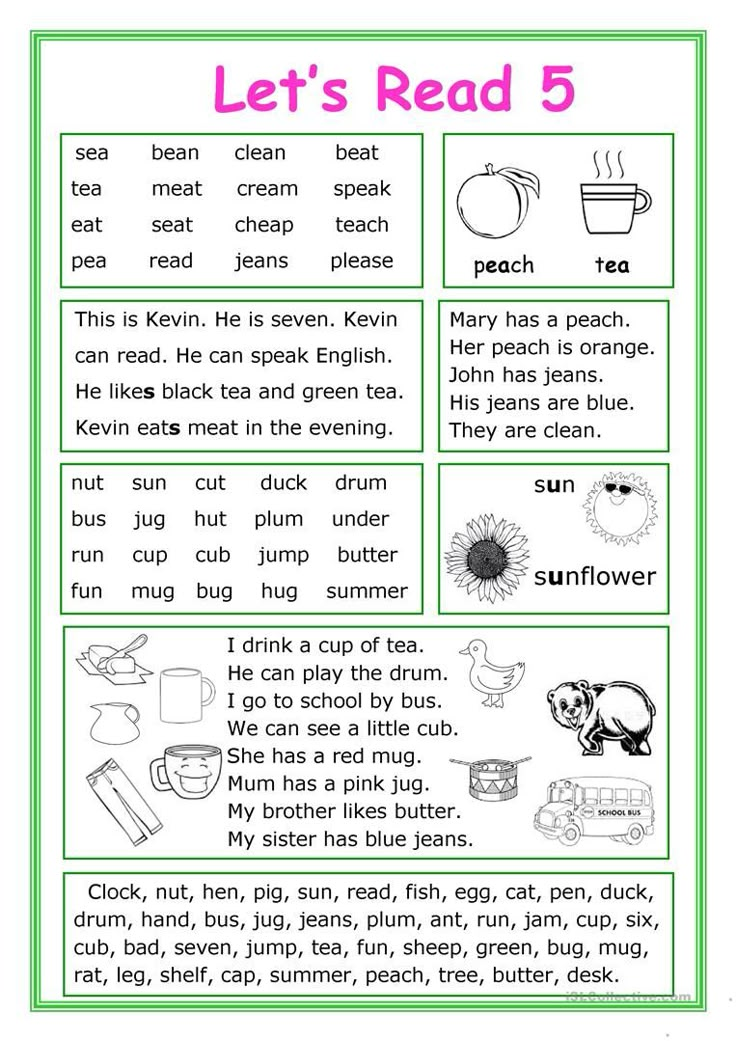 One of the important aspects that you should pay attention to is reading.
One of the important aspects that you should pay attention to is reading.
When learning any foreign language, it is important to devote time to four areas: reading, speaking, writing and listening. It is impossible to fully learn a language if at least one of the items is missing. The approach to learning should be comprehensive: you can’t concentrate on one thing and assume that the rest will catch up with time. For example, if a child is only engaged in writing or listening, he will never learn to speak correctly. Children who perceive information well by ear, growing up, become people who understand everything, but cannot say anything. Such knowledge is considered half-hearted, since a person is not able to use it to the fullest.
Language learning is not limited to reading , but, despite this, it should be given special attention. It doesn't matter what language you are going to learn: English, German or any other. Children who read well will make progress in mastering other aspects.
Children who read well will make progress in mastering other aspects.
For clarity, let's turn to the Russian language. A well-read person, as a rule, has a well-structured and beautiful speech. He gets used to the turns he meets in books, and his speech becomes more structured and pleasant. When we read, our subconscious remembers grammar and punctuation: reading automatically improves written language. The same principle will work in the study of foreign languages: with the help of reading, we, without realizing it, improve literacy and speaking.
Methods of teaching reading
They can all be divided into three categories: the study of sounds, the alphabet and whole words.
The phonological method
The child is taught how to pronounce letters correctly and what sounds are formed from their combination. For example, the words "they" or "she" are read quite differently from how they are written, the method focuses on such cases. The purpose of its application is to make sure that the child immediately understands how to read the word aloud correctly, even if he sees it for the first time.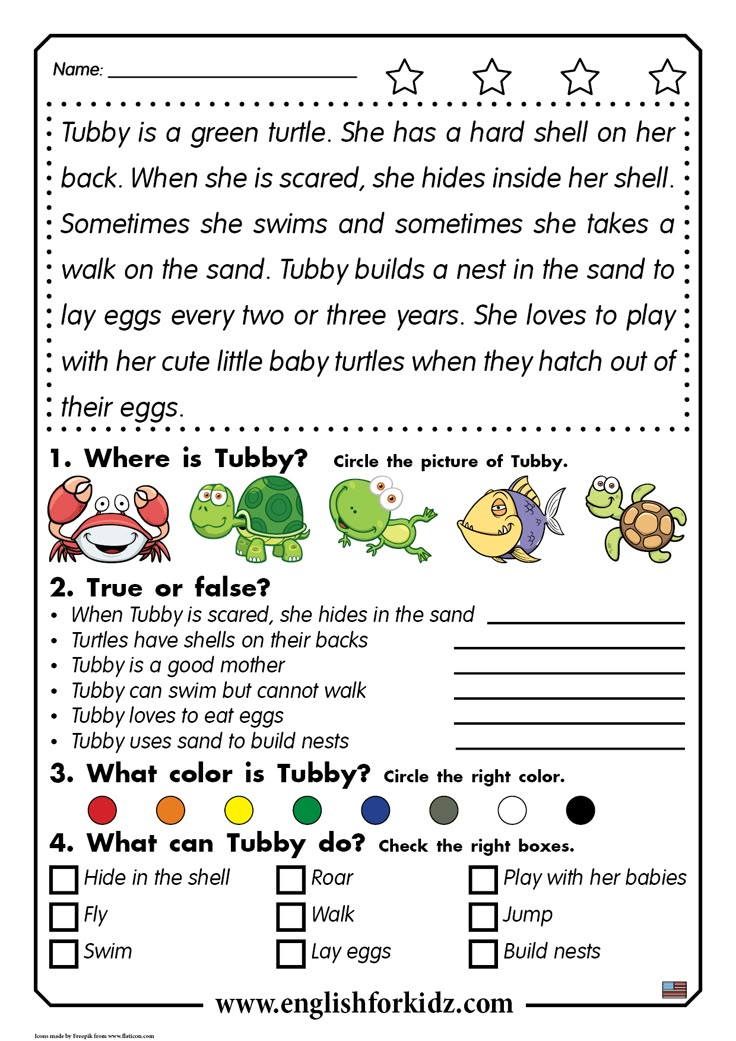
Whole word method
With this approach, the child is not taught how to read phonemes correctly, but goes straight to words. They always start with simple ones, then move up incrementally. Children remember how a certain set of letters is read in a certain word, and subsequently transfer the learned pattern to the pronunciation of others. For example, if a child remembers how to read the word "father", he can easily read "mother" as well, since the words are similar in sound and spelling.
Alphabetical method
The child begins to learn the language through the alphabet and only then moves on to words. If we recall the Russian language, then the letters in our alphabet are pronounced differently than in words. Since childhood, the ABC taught to read “be, ve, ge”, however, when it comes to speech, “e” disappears. Drawing an analogy, we can say that the same thing happens in English.
The alphabetical method is inferior in effectiveness to the other two.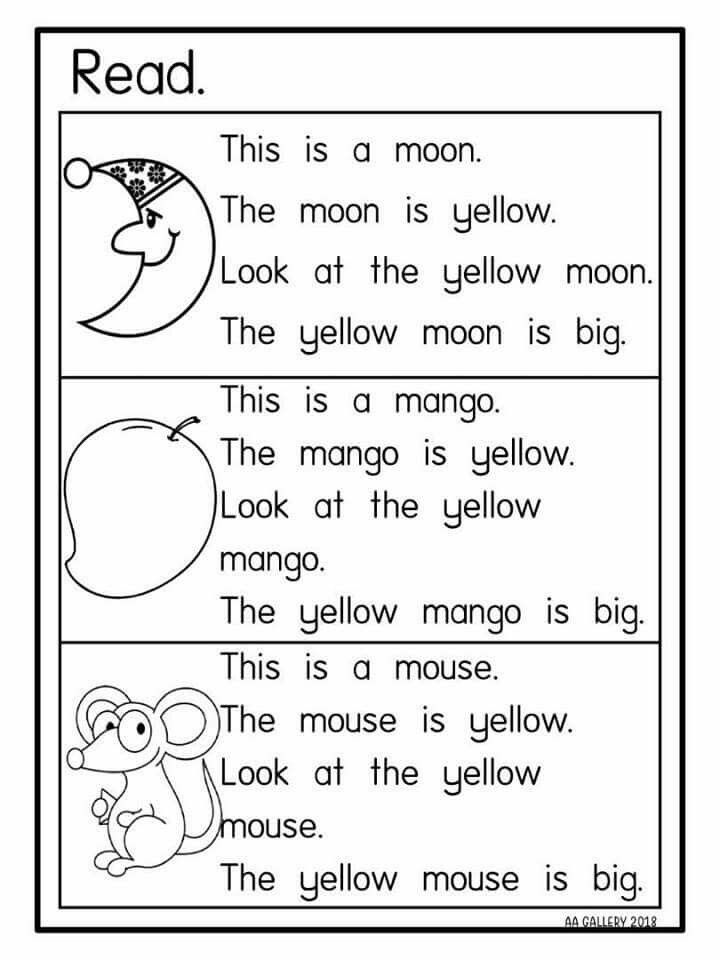 When you hear from a parent: “My child knows the alphabet, but can’t read at all,” you become a witness to the fact that this approach really does not work. Reading in English cannot become a confident skill for a child if there is no emphasis on learning sounds. It is not necessary to know the name of the letter, it is necessary to see the combination and correctly reproduce the sound.
When you hear from a parent: “My child knows the alphabet, but can’t read at all,” you become a witness to the fact that this approach really does not work. Reading in English cannot become a confident skill for a child if there is no emphasis on learning sounds. It is not necessary to know the name of the letter, it is necessary to see the combination and correctly reproduce the sound.
Of course, there are many exceptions in English that do not read the way they are written, and this creates difficulties. But at the initial stage, the phonological approach proved to be one of the most effective.
Practical advice
The use of the phonological method in teaching reading will only work if the child himself is interested in learning. He, like an adult, will be bored just reading letters and sounds. It is necessary to involve him in classes and instill an interest in learning. There are a lot of ways, we have collected the most effective:
Songs and cartoons
Play music and cartoons for your child.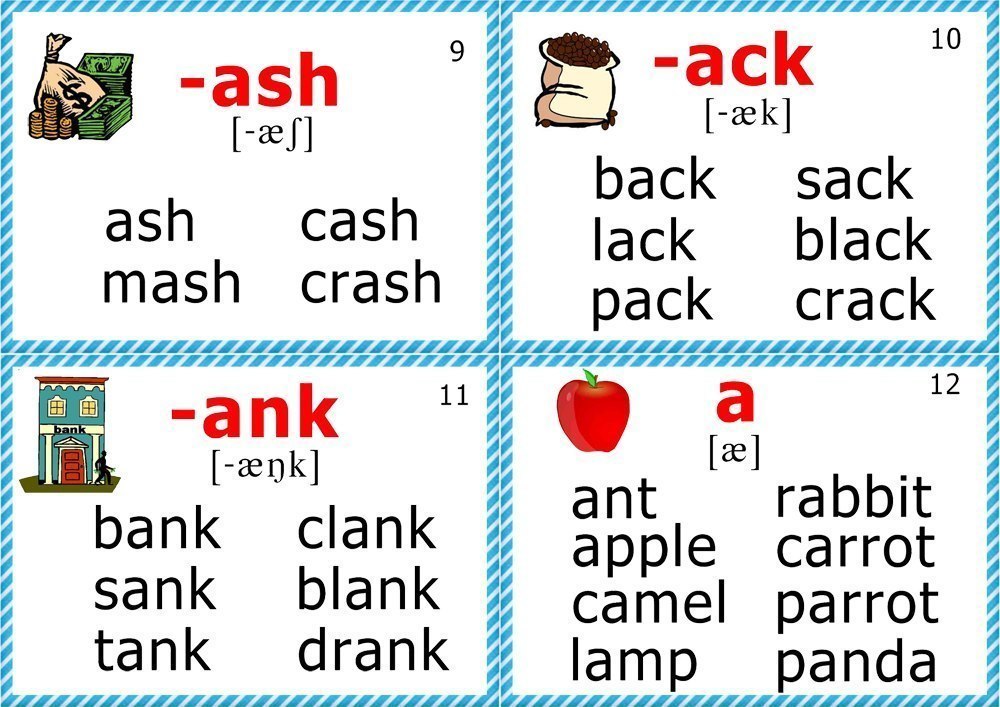 For the initial stage, it is better to find material designed specifically for teaching young children. Cartoons that are shown to pupils of kindergartens or elementary grades in American and British schools are also suitable. This, among other things, will provide an opportunity to familiarize the student with the English-speaking culture. For children to be truly addicted, rhythmic songs with frequent repetitions and cartoons with bright pictures are needed. I suggest using the Super Simple website: here you can watch videos and learn the pronunciation of letters and letter combinations. You can check out the Alphablocks YouTube channel: the movable symbols that themselves add up to words right on the screen will surely please your child.
For the initial stage, it is better to find material designed specifically for teaching young children. Cartoons that are shown to pupils of kindergartens or elementary grades in American and British schools are also suitable. This, among other things, will provide an opportunity to familiarize the student with the English-speaking culture. For children to be truly addicted, rhythmic songs with frequent repetitions and cartoons with bright pictures are needed. I suggest using the Super Simple website: here you can watch videos and learn the pronunciation of letters and letter combinations. You can check out the Alphablocks YouTube channel: the movable symbols that themselves add up to words right on the screen will surely please your child.
Games
This method is great for kids who are always bored. The child will think he is playing when he is actually learning. Interesting games for memorizing all the sounds of the English language can be found on the Starfall website.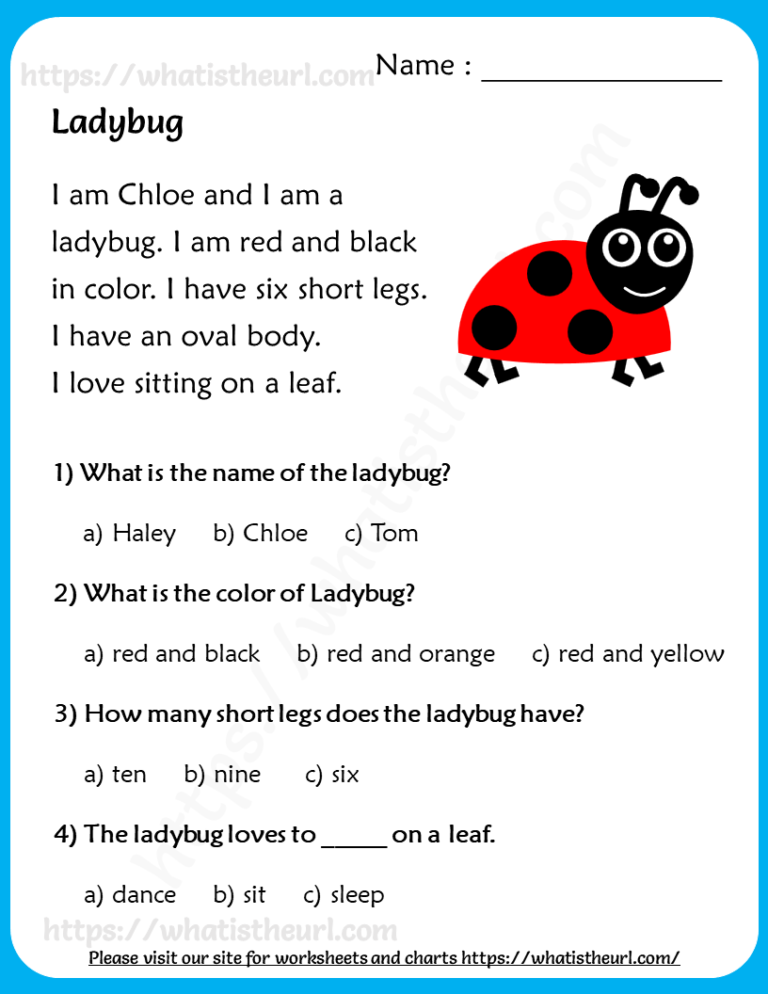 In addition to the website, the Starfall learn to read mobile app is also available. On the ABCYA website, you can also find many exercises for pronunciation and memorization of sounds and letters. Such interactive activities can not only motivate a child, but also remove barriers: fear of failure, embarrassment to speak a foreign language, or just laziness. Games are the best way to show your child that reading is easy.
In addition to the website, the Starfall learn to read mobile app is also available. On the ABCYA website, you can also find many exercises for pronunciation and memorization of sounds and letters. Such interactive activities can not only motivate a child, but also remove barriers: fear of failure, embarrassment to speak a foreign language, or just laziness. Games are the best way to show your child that reading is easy.
Worksheets with letters (Worksheets)
To play sound correctly, you need to know what a letter looks like and how it is read - it is read, not called in the alphabet. Phonics worksheets can be downloaded by entering a query in a search engine and selecting the appropriate option. A combination of worksheets with videos about sounds will be useful. For example, in a worksheet there are letters -a, -t, -h. Find a video for these sounds and turn it on to your child, so he will learn the material as much as possible.
Reading short picture books
Printed books can be used, or electronic versions can be downloaded from the Internet.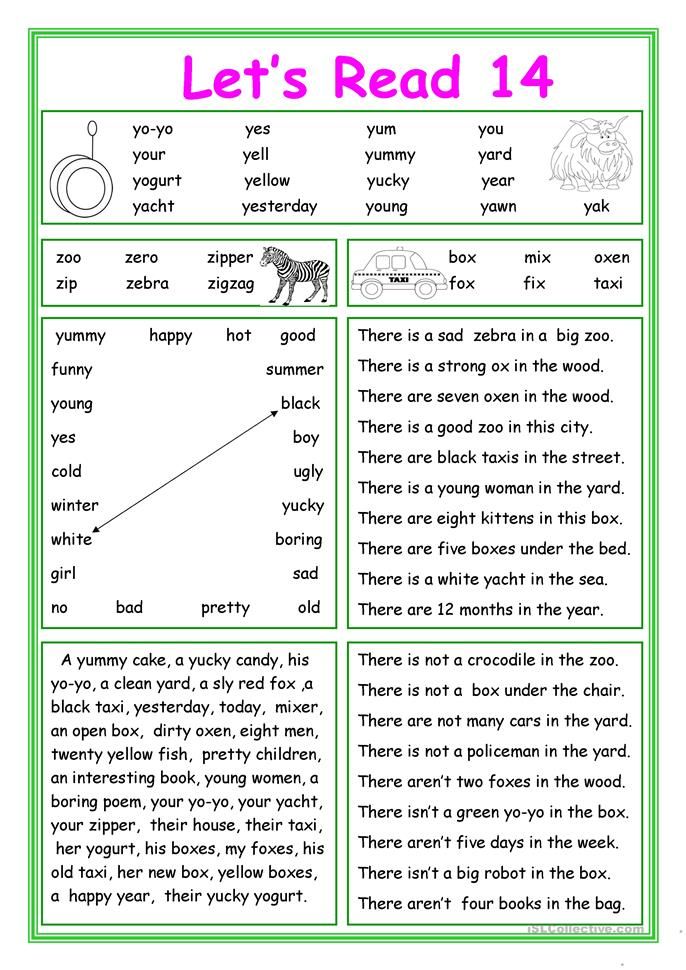 You will find great interactive content on the aforementioned Starfall. The child can hover over any letter and see how the sound or word is played. This approach is especially useful at the start to achieve understanding of simple, short stories. When the child manages to read his first text, self-confidence and additional interest will appear, and fear will recede.
You will find great interactive content on the aforementioned Starfall. The child can hover over any letter and see how the sound or word is played. This approach is especially useful at the start to achieve understanding of simple, short stories. When the child manages to read his first text, self-confidence and additional interest will appear, and fear will recede.
Why combine methods
Despite the outstanding effectiveness of many methods, it is not enough just to fill out worksheets, watch cartoons or play games. For successful learning, you need to use all methods in a complex and constantly maintain diversity.
Even an adult can lose interest if he constantly performs the same type of monotonous tasks. With children it is even more difficult: they can quickly get bored with even the most interesting activity, and they will want to switch to something new. They can be capricious and refuse to do an exercise that previously seemed the most exciting. It's always good to have a few alternatives to activity on hand in case the day comes when the child refuses to do what they used to love.